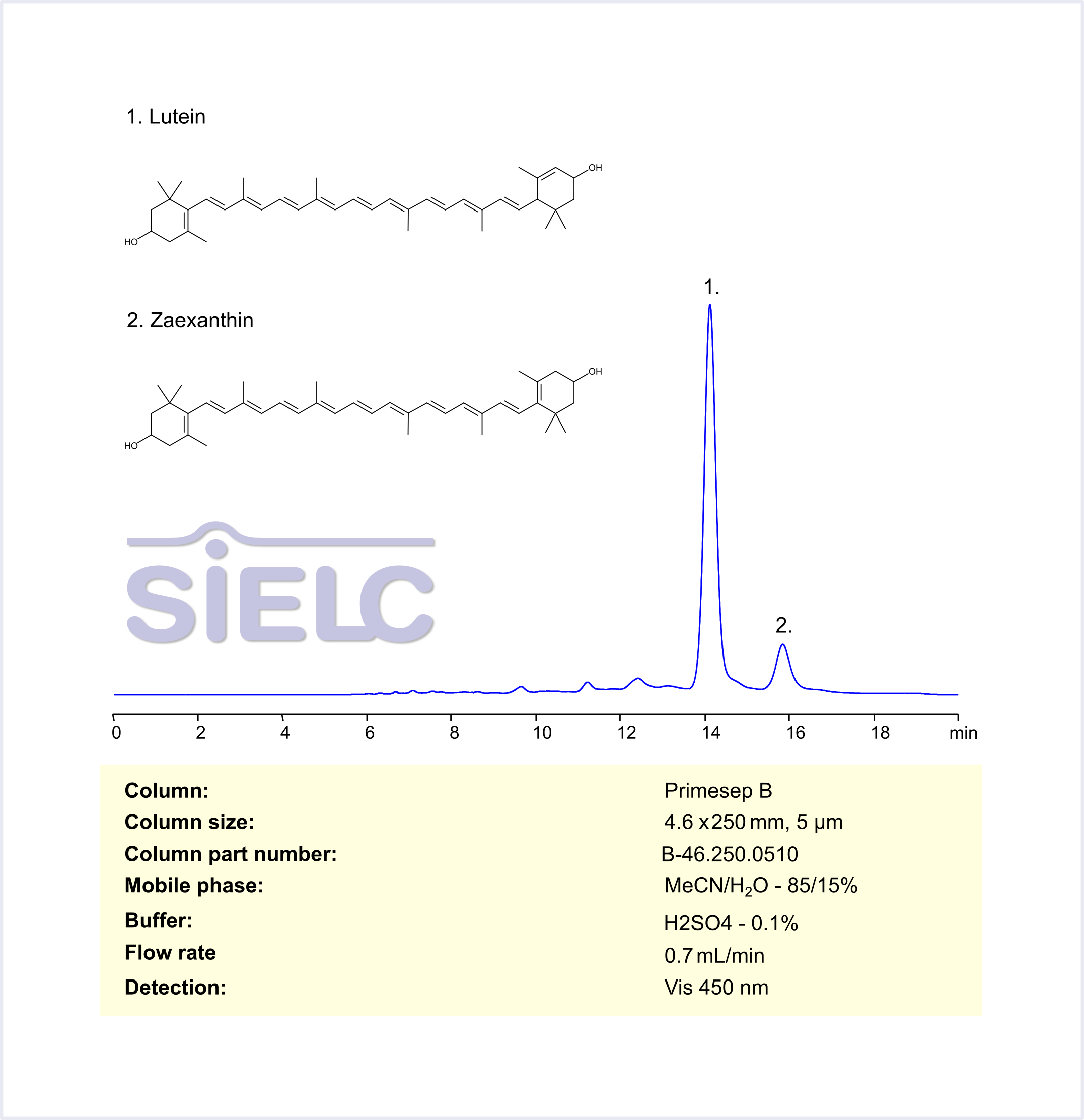High Performance Liquid Chromatography (HPLC) Method for Analysis of Lutein, Zeaxanthin on Primesep B by SIELC Technologies
Separation type: Liquid Chromatography Mixed-mode SIELC Technologies

High Performance Liquid Chromatography (HPLC) Method for Analysis of Lutein, Zeaxanthin
Lutein is an oxygenated carotenoid, or xanthophyll, with the chemical formula C₄₀H₅₆O₂. It has a chain of conjugated double bonds and hydroxyl groups at each end, which give it strong antioxidant properties. Lutein’s ability to absorb blue light helps protect the eyes from oxidative stress. In plants, lutein stabilizes chlorophyll and protects cells from light-induced damage.
Zeaxanthin is also a xanthophyll carotenoid, sharing the same chemical formula as lutein, C₄₀H₅₆O₂, but with a different arrangement of double bonds. This structural variation allows zeaxanthin to be particularly effective in protecting the central macula of the retina. It filters harmful blue light and shields the eyes from oxidative damage, similar to lutein.
Lutein, Zeaxanthin can be retained, separated and analyzed using a Primesep B mixed-mode stationary phase column. The analysis employs an isocratic method with a simple mobile phase comprising water, acetonitrile (MeCN), and sulfuric acid as a buffer. This method allows for detection using Vis 450 nm.
| Column | Primesep B, 4.6 x 250 mm, 5 µm, 100 A, dual ended |
| Mobile Phase | MeCN – 85% |
| Buffer | H2SO4 -0.1% |
| Flow Rate | 0.7 ml/min |
| Detection | Vis 450 nm |
| Class of Compounds | xanthophylls |
| Analyzing Compounds | Lutein, Zeaxanthin |
Application Column
Primesep B
Column Diameter: 4.6 mm
Column Length: 250 mm
Particle Size: 5 µm
Pore Size: 100 A
Column options: dual ended
Zeaxanthin





